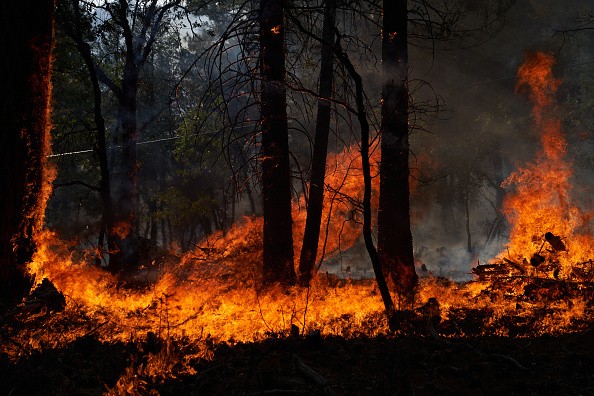According to fire officials, a wildfire in North Carolina has grown to burn 350 acres in two days and is barely contained. The fire reached the Pisgah National Forest, approximately a mile from Grandfather Mountain's base.
The fire is predicted to burn south and east towards the Lost Cove Wilderness Study Area along Timber Ridge. At the same time, according to the Forest Service, firefighters focus on preserving resources on the northwest end of the fire.
According to authorities, firefighters are battling a blaze near Grandfather Mountain that has burnt 35 acres.
Christmas Day Fire

According to the Linville Volunteer Fire Department's Facebook page, the fire that started in the Roseboro neighborhood on Friday had expanded overnight but was not threatening any properties as of Saturday. Residents were supposed to be protected by equipment, according to the post.
According to the fire department, the fire started on the Blue Ridge Parkway side of Grandfather Mountain. Early Sunday, the agency stated the wildfire continued to move and change with the gusts, according to a subsequent post.
A nature park and animal habitat, as well as hiking paths and a Mile-High Swinging Bridge, may be found on Grandfather Mountain. It's 75 miles (120 kilometers) north of Asheville.
Related Article : Study Shows How Wildfire Triggers Major Forest Changes
2021 Wildfires Statistics

For the American west, 2021 proved to be another terrible fire year.
Wildfires exploded throughout the United States, burning about 7.7 million acres amid a catastrophic drought and record-breaking heatwaves. Some of them smashed records that had only been set lately. While the quantity of area burnt this year did not match the heights seen in 2020, a worrying new pattern emerged: flames are becoming more challenging to put out.
"With the circumstances we saw this year and everything building up to it - unprecedented drought, these protracted dry spells, heatwaves - everything combined made it a tough year," said Aitor Bidaburu, the US Fire Administration's wildfire program manager. "The fury with which they burned," he recalls, was his major lesson from the fires.
The fire season that has extended well into the year, flames that have become more violent, and climatic circumstances leading fires to behave dangerously.
Severe Fires
Fires performed exploits that had never been witnessed before. "Fires moved in a specific way and a certain pattern over the first 25 years of my career, but today they are acting quite unexpectedly," said CalFire battalion chief Jon Heggie. "Fires are burning hotter and quicker than ever before."
The severity of this year's fire season has heightened the stakes, prompting governments to rethink their firefighting techniques. Climate models predict that if current greenhouse gas emissions continue, the danger of catastrophic wildfires might increase by up to 6-fold in the next three decades.
Also Read : How Climate Misinformation Through Social Media Worsens the Battle Against Climate Change
For more news update about Environmental Action, don't forget to follow Nature World News!
© 2025 NatureWorldNews.com All rights reserved. Do not reproduce without permission.

